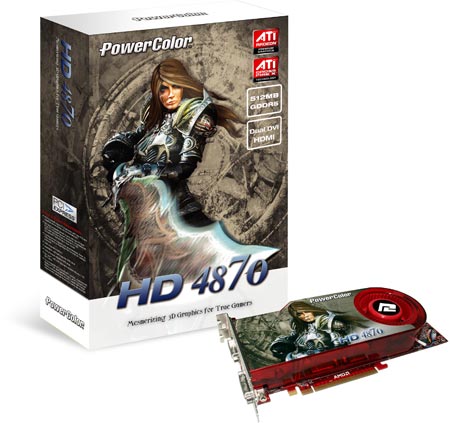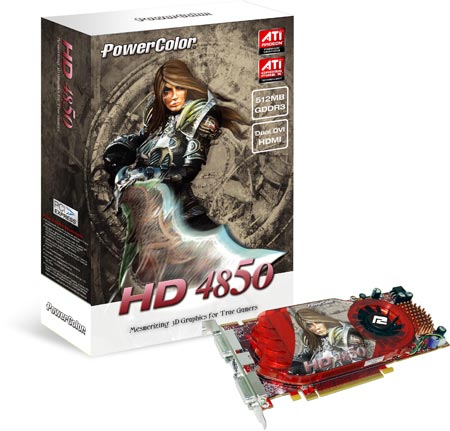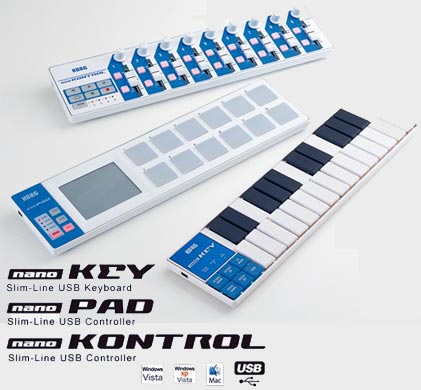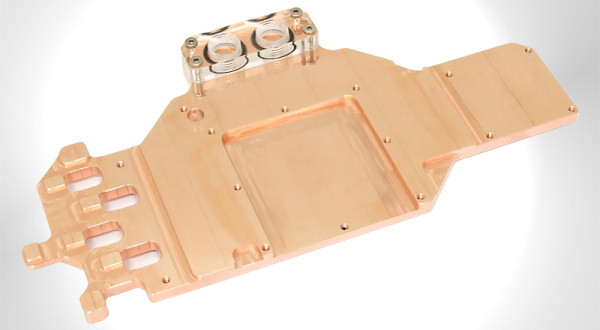 |
||
|
||
| ||
Pioneer BD Combo Drives Become 40% Cheaper In China ASUS Unveils ARES CG6155 Desktop PC PowerColor Introduces Its HD 4850, 4870 Cards Korg nanoSeries Turns Notebooks Into A Sound House AMD To Release Rival To Intel Atom This Year, For A Lower Price Toppan Printing Enters into New Photomask Process Development Agreement with IBM Aquacomputer Presents Liquid Cooler For GTX280 Asetek Announce LCLC Cooler For NVIDIA GeForce GTX 200 Toshiba Develops Higher Performance CMOS FET USBfever launched a new funny iPhone silicone case that makes it look like a chocolate bar. According to the product page, the novelties not only look like chocolate, but are also packed like chocolate bars on a supermarket shelf. The case costs 27 USD.  A pity it doesn't taste like chocolate. Source: USBfever Pioneer BD Combo Drives Become 40% Cheaper In China So far only the Chinese market is known to offer reduced prices. But, perhaps, Pioneer will do the same in other regions as well. According to the source, a couple of days ago, Pioneer reduced the retail price of the BDC-S02BKZ down to $145, thus cutting its price by 41.2%. According to industry sources, the reduction will affect other suppliers of BD Combo and BD-ROM drives. BDC-S02BKZ was introduced to the Chinese market in Q4'2007 for about $390 and underwent the first price cut this March. Market observers believe this new price correction has been made to whip up the demand that is to start growing as Beijing 2008 Olympic Games approach. Besides, in July Pioneer plans to cut the retail price of BDC-S02 drive from $312 to $230 in Taiwan. As BD Combo retail prices are higher than those of BD-ROM drive by about 30%, the price reduction will narrow this gap. Source: DigiTimes ASUS released the new small-footprint, low-power Eee Box. 1L in size, the Eee Box also mounts VESA LCD displays to free up even more space. With the proprietory Express Gate fast boot technology, users can operate the PC in just 7 seconds after boot up (this time actually varies for different configurations). The Eee Box also supports WiFi 802.11n. The machine features an original heat dissipation module with the AI fan, the total noise is about 26db. The Eee Box also utilizes Green Design and is made with only "earth-friendly" materials for reduced CO2 emissions; and conforms to RoHS and WEEE standards. Specifications:
Source: ASUS ASUS Unveils ARES CG6155 Desktop PC ASUS has unveiled the new ASUS ARES CG6155 Desktop PC. According to the press release, the exterior design is inspired by ancient and modern armor with both Eastern and Western influences. ARES is equipped with Quad-core CPUs, 3-way SLI graphic cards and factory overclocking that boosts CPU performance by up to 33%. Additionally, it features a Blu-ray optical disc drive, high-definition audio and DDR3 memory. Due to its Dual Power and customized liquid cooling modules, ARES offers improved stability. This Dual Power design supports up to 2 kilowatts of power.  Specifications:
Source: ASUS PowerColor Introduces Its HD 4850, 4870 Cards TUL Corporation introduced its new PowerColor HD 4870 and HD 4850 graphics cards. The PowerColor HD 4800 series is based on the 55nm AMD RV770 GPU. At that, the HD 4870 features 725 MHz core clock rate, 512 MB of GDDR5 at 1,800 MHz and a 256-bit bus with 3.6 Gbps throughput. The HD 4850 features 512 MB of GDDR3, 256-bit bus and 625/1,986 MHz clock rates.  The PowerColor HD 4800 series supports DirectX 10.1, PCI Express 2.0, Shader Model 4.1, Universal Video Decode 2 and ATI CrossFireX as well as H.264, VC-1, MPEG-2 hardware decoding. Other features include built-in 7.1-channel audio controller for HDMI output and HDCP support. Both cards feature Dual-Link DVIs supporting resolutions up to 2560x1600.  Source: PowerColor Korg nanoSeries Turns Notebooks Into A Sound House For all willing to use their notebooks as a mobile sound recording studio, Korg is preparing its new nanoSeries. It includes nanoKEY keyboard (25-key velocity-sensitive), nanoPAD (2 highly responsive trigger pads, also capable of sending both notes and MIDI control data, plus an X-Y pad with roll and flam functions), nanoKONTROL (nine faders, nine knobs and 18 switches plus a full transport section for expansive control). Sized 320 x 83 x 14 mm, the nanoKEY will be bundled with Korg M1Le, a light version included into the Legacy Collection Digital Edition. The nanoPAD is sized 320 x 82 x 16.5 mm and is bundled with a free Toontrack EZDrummer Lite software. Finally, nanoKONTROL buyers will be given a discount coupon for Ableton Live. The latter device is the largest of three, sized 320 x 82 x 29.5.   All these miniature solutions operate and are powered via USB. While no release dates have been announced yet, each of the novelties is said to cost about $100. Sources: Korg, musicradar.com, DV247.com AMD To Release Rival To Intel Atom This Year, For A Lower Price According to the source, AMD has recently informed partners about the development of a CPU for inexpensive PCs that will compete with Intel Atom and Via Nano. The novelty is scheduled for official release this year and actual machines with it are to go on sale in H1'2009. Confirming and specifying the previous information, the source states this single-core 65nm processor will feature K8 architecture with AMD64 instruction set and will operate at 1.2GHz. AMD expects its inexpensive CPU to cost less than Intel Atom. The company has already started negotiations with Micro-Star International (MSI), Hewlett-Packard (HP), Acer and a few Chinese companies related to releasing PCs based on the new processor. Source: DigiTimes Toppan Printing Enters into New Photomask Process Development Agreement with IBM Toppan Printing announced that it has entered into a new development agreement with IBM that covers the last phase of 32nm photomask process development, and all phases of 22nm photomask process development. This joint development will take place at IBM's Burlington photomask facility in Essex Junction, VT., starting this month. Photomasks are used to transfer semiconductor chip circuits onto a silicon wafer, and this photolithography process is a critical first step in semiconductor production. Semiconductors have become increasingly sophisticated due to growing demand for telecommunications devices and highly complex and multifunctional digital consumer electronic products. Therefore, it is vital that semiconductor and photomask manufacturers work closely together to develop the advanced lithography technologies that will be needed to produce future-generation semiconductor chips. In order to keep pace with this changing technological environment, Toppan Printing and IBM started joint development of photomasks for 45nm semiconductors in 2005, and expanded the scope of their activities to include 32nm development in 2007. Toppan Printing has developed a 32nm photomask process at its facility in Asaka, Japan. As part of the activities under the new development agreement, Toppan Printing will work with IBM to integrate the Toppan Printing process into the 32nm photomask process that Toppan Printing and IBM will jointly develop, thus potentially optimizing the performance of the jointly developed process. As for the 22nm semiconductor generation, the industry is considering implementation of many new technologies such as EUV lithography and nano-imprint, but many technical issues remain outstanding. So IBM has determined to pursue with Toppan Printing the joint development of a 22nm photomask process by technical innovation of ArF immersion lithography, the current mainstream technology for the manufacture of 32nm photomasks. Source: Toppan Printing WD announced it is now shipping the new WD RE3 SATA hard drives, the company's latest generation of "RE" family drives. As data centers become larger and more complex, WD's third-generation high capacity enterprise SATA hard drives enhance vibration and shock tolerance and deploy new electronics to increase performance approximately 20 percent and by as much 60 percent in high-vibration environments. In line with the WD RE drive heritage, WD RE3 drives feature 1.2 million hours MTBF, native command queuing (NCQ), time limited error recovery (TLER), and an extensive and enhanced testing process. Features:
 WD RE3 500GB (WD5002ABYS), 320GB (WD3202ABYS) and 250GB (WD2502ABYS) hard drives are available now. Manufacturer's Suggested Retail Price (MSRP) for the WD RE3 500GB is $119, the 320GB is $89 and the 250GB is $79 USD. WD RE3 drives are covered by a five-year limited warranty. Source: WD Aquacomputer Presents Liquid Cooler For GTX280 German Aquacomputer presented its aquagrafx G200 liquid cooling solution for NVIDIA GTX280. The cooler is produced from highly purified electrolysis copper and provides very high cooling capacity. Due to the up to 20mm broad channels inside the block it has very low flow resistance. The copper plate of the cooler is approximately 8mm thick and weighs about 660g. It is made of a solid copper block weighing almost 2.2 kg. The GPU area is covered by an optimized cooling surface which is about 25% larger than that of the previous solutions. The unit has G1/4" connectors. Priced 94.90 EUR, the novelty will go on sale on June 25, 2008. However, pre-orders are already available.   Source: Aquacomputer Asetek Announce LCLC Cooler For NVIDIA GeForce GTX 200 Asetek announced the availability of its OEM-ready, LCLC liquid cooling solution for nVidia's new GeForce GTX 200 family of graphics cards. According to the press release, Asetek's solution lowers the GPU temperatures found on the GTX 280 by up to 27 degrees. And since it's liquid cooled, it operates without noise, except for the system heat exchanger fan that is 30 dB(A) quiet. Furthermore, as a single-slot solution, when used as part of a three-way SLI configuration, the LCLC product consumes only three of the six slots normally used, freeing the rest for other configuration upgrades. Source: Asetek Toshiba Develops Higher Performance CMOS FET Toshiba Corporation today announced that, together with IBM Corporation, it has developed a higher performance CMOS FET, a high priority for advanced system LSI. The new technology matches the highest possible performance, and opens the way for further advances in process technology. High performance, low power and scalability have won CMOS technology a central place in semiconductor technology, a position now under threat as CMOS scaling edges towards fundamental physical limits that inhibit further advances in transistor performance and migration to finer process technology. As a consequence, the industry is seeking new ways to overcome these challenges. These approaches include adoption of new materials such as High-K and metal gates and new structures. Another way to improve performance is to increase the mobility of electron, or holes, through device channels; direct silicon bonding (DSB) wafers, a bulk CMOS hybrid type wafer that bonds (100) and (110) substrates, is a recognized candidate for advancing this approach. In developing the new methodology, obtaining standard (100) silicon wafers by rotating the plane of the (100) layer by 45 degrees and thinning the DSB layer of the (110) substrate, Toshiba and IBM have successfully integrated technology with improving 10% delay of the ring oscillator than achievement compared to conventional DSB substrate 0 degree (100) wafers, which bonds to a wafer two silicon substrates, a (100) and a (110) substrate. The development improved the ring oscillator delay to a point of 30% than the standard (100) wafers. The achievement can be integrated with technologies that can reach even higher advances. CMOS makes use of two types of transistors: positively-charged field effect transistors (PFETs), and negatively charged FETs (NFETs). For PFETs, hole mobility is known to achieve a higher performance on a substrate with (110) surface-orientation than on a substrate with (100) surface-orientation. However, for NFETs, electric charge mobility deteriorates on a substrate with (110) surface-orientation, compared to mobility on a substrate (100) surface-orientation. Toshiba and IBM achieved the newly announced performance using new hybrid-orientation technology fabricated on a hybrid substrate with different crystal orientations to achieve significant PFET performance improvement without any deterioration in NFET performance. Toshiba is studying various technologies for future advanced devices, and believes that the new technology is a step forward to more powerful practical devices. Appendix (PDF) Source: Toshiba Corporation Thecus N5200BR NAS (Network Attached Storage) Review @ hardwareLogic
Write a comment below. No registration needed!
|
Platform · Video · Multimedia · Mobile · Other || About us & Privacy policy · Twitter · Facebook Copyright © Byrds Research & Publishing, Ltd., 1997–2011. All rights reserved. |